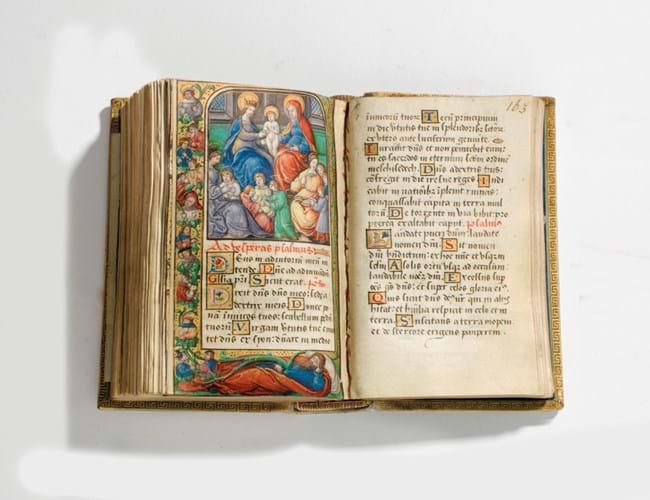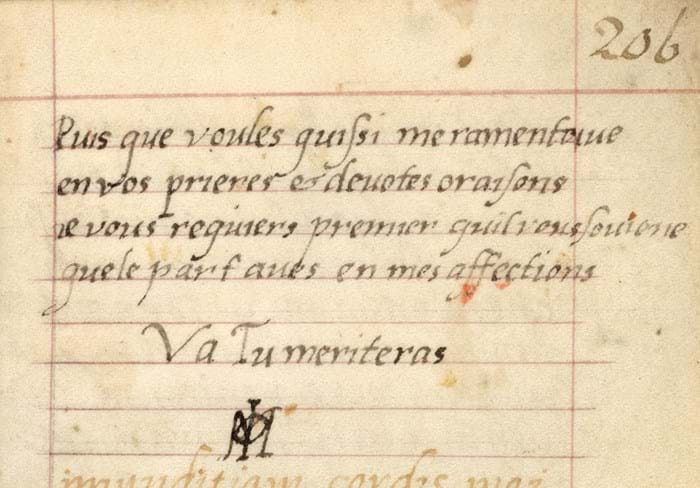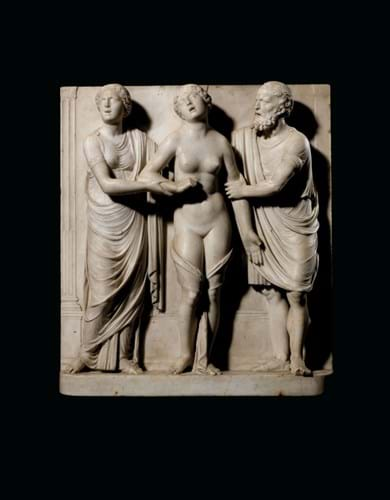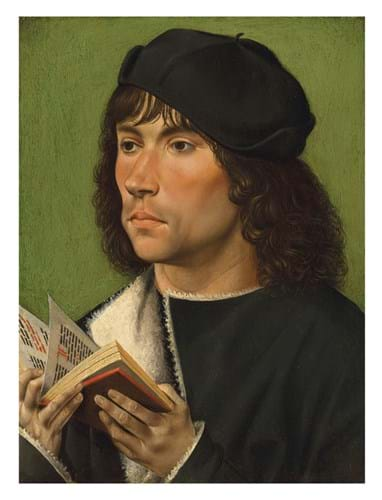
Estimated at £250,000-350,000 at the auction on July 29, the manuscript on vellum from c.1535-40 was illuminated with an impressive cycle of 40 miniatures painted by the Master of François de Rohan, one of the most highly regarded artists of the court of King Francis I of France.
The manuscript was created for Louise de Bourbon-Vendôme, head of the Royal Abbey of Fontevraud (1534-75).
It is believed that she then gave it to her grand-niece Mary between 1558-61, who left a signed token of their mutual affection on one of the endleaves, along with her motto and monogram.

The inscription by Mary, Queen of Scots in her prayer book that sold at Christie's. Image: Christie's 2020.
Return to Scotland
Mary spent her childhood at the French court and became queen consort on her marriage to Francis II. His early death in 1560 however led to her return to Scotland a year later.
The prayer book came with her to Scotland in 1561 but it is not known to whom it immediately passed after Mary’s death 26 years later.
However a bookplate on the upper pasteboard indicated that it was owned by the Hale family of Alderley, Gloucestershire in the 18th century. This suggests it had been part of an archive of manuscripts relating to Mary, Queen of Scots that had been compiled by Henry Grey, the 6th Earl of Kent, who was one of the principal commissioners at Mary's trial and execution. The archive is understood to have passed from Grey to John Selden (1584-1654) and it was then inherited by Sir Matthew Hale (1609-1676), Chief Justice of the King’s Bench.
It stayed with the Hale family well into the 20th century and subsequently entered an American collection from where it was consigned to Christie’s.
Although the lot was highly anticipated, it was eventually knocked down on low estimate to a private buyer.
The sale itself offered a mix of pictures in different categories as well as objects – in effect combining the Old Master evening sale and the Exceptional sale that are regular events at Christie’s Classic Week of auctions. The final total was £21.2m including premium with 48 of the 65 lots selling on the night (74%).

‘Death of Lucretia’, a marble relief attributed to Venetian sculptor Antonio Lombardo – £3.1m at Christie’s.
The star performer of the night was a marble relief of the Death of Lucretia attributed to Italian Renaissance sculptor Antonio Lombardo (1468-1516). It had been purchased by the father of the private European vendor in the early 1950s although its significance had been previously unrecognised and it was seemingly unknown to modern scholars in the field.
Measuring 19 x 17in (48 x 43cm), the Christie’s catalogue stated that it related to a series of small rectangular plaques, all depicting figures from classical antiquity carved in such high relief as to be almost fully three-dimensional. In this case Lucretia was depicted standing in the centre of the relief, flanked by two attendant figures and plunging a dagger into her bosom.
A great rarity at auction, it drew strong competition against a £500,000-800,000 estimate and was knocked down at £3.1m to a European buyer. The price was a record for a work by Lombardo at auction.
Mixed Old Masters
Elsewhere at the sale, a portrait of an unknown woman catalogued as by Sir Peter Paul Rubens (1577-1640) portrait got away at £3.4m. Although it sold under estimate, it made the top price of the night.
Christie's head of Old Master evening sales in London Clementine Sinclair said it was “entirely by Rubens” and there was “no question about the attribution”, although the fact that it was unfinished and little was known about its early provenance, as well as being unsold at auction in 2009, may have counted against it commercially.
Much stronger bidding came for a small portrait of a man holding a prayer book which was offered as by a ‘Burgundian Master, c.1480’. The 11.5 x 8.5in (29 x 22 cm) oil on panel depicted the subject bust-length in a fur-lined coat and had some similarities in terms of style and technique to known works by Quentin Massys (1466–1530), to whom it was traditionally attributed, and also Rogier van der Weyden (1400-1464).
However a better match appears to be a portrait in the Woëlmont collection at Ammersoyen Castle in The Netherlands which itself has never been identified but has historically been attributed to an anonymous French or Burgundian master active between c.1480-1500.
The painting also came to auction with an exceptional provenance – it was once owned by Sir Robert Walpole whose prodigious collection was inherited by his son Horace before later being acquired by the Earl of Derby (1775–1851), and passing to the current ‘noble’ vendor by descent.
Estimated at £400,000-600,000, it drew good competition and was knocked down at £1.35m.






